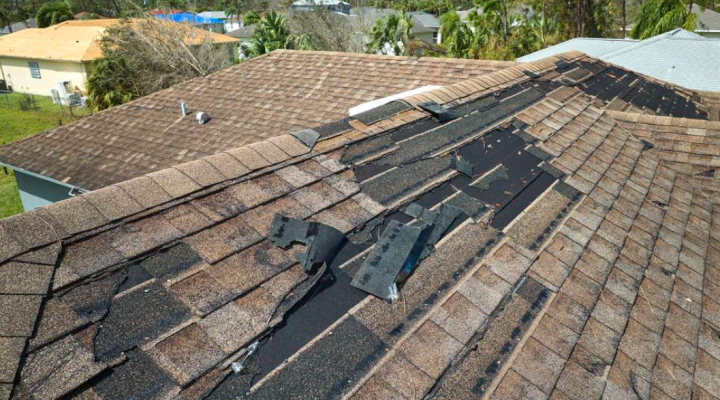
Following extreme weather events like storms, hurricanes, or strong winds, it’s critical to quickly assess and fix any damage to your home’s roof. If a damaged roof is ignored, it may develop leaks, structural problems, and more degradation. To keep your property safe and secure after severe weather, this article will go over how to repair the roof of your house.
Assess the Damage
To ascertain the extent of repairs necessary, a thorough evaluation of the damage to your roof is important. Spend some time carefully examining every part of the roof to look for obvious damage indicators, such as broken or missing shingles, flashing that is cracked or displaced, or any indications of water spots on the interior walls or ceiling of your house. If getting onto the roof is a safety risk, use binoculars to examine the roof up close to the ground. Prioritize repairs based on the places that need urgent care to address any problems before they get worse over time.
Safety First
It is imperative to put safety first before beginning any roof repair work. Put on the proper protective gear, such as safety glasses, gloves, and sturdy shoes, to reduce your chance of getting hurt when doing repairs. It is best to err on the side of caution and hire an experienced Austin roofing company that is qualified to make repairs safely and effectively if the damage looks severe or presents serious concerns.
Replace Missing or Damaged Shingles
It’s critical to replace missing or damaged roof shingles as soon as possible to stop water from seeping in and causing more structural damage. Using a mallet and pry bar, carefully remove the vulnerable shingles first, lifting the edges and extracting the nails. New shingles should be slid into place, carefully aligned with the adjacent shingles, and tightly fastened using roofing nails. Apply a coating of roofing cement around the edges of the freshly placed shingles to strengthen their integrity and provide a barrier against future leaks.
Repair Flashing and Sealants
The flashing that surrounds skylights, vents, chimneys, and other types of roof penetration is essential for keeping water out of your roof and preserving its structural integrity. Examine the flashing carefully for any indications of degradation or damage, and repair any damaged portions as soon as possible with new, precisely fitting pieces. To establish a tight seal and stop water penetration, use roofing glue around the edges and screws or roofing nails to firmly hold the new flashing in place. To further reduce the chance of leaks, evaluate the sealants surrounding vents, pipes, and additional roof openings and reapply as needed.
Reinforce Weak Areas
It’s critical to locate and strengthen your roof’s weak spots to stop more damage and preserve structural integrity. Installing extra support, such as braces or trusses, will strengthen these weak spots, distribute weight uniformly, and stop additional structural degradation. Seek advice from a qualified roofing contractor if you’re unsure of how to repair weak spots properly or if the damage seems to be substantial. They can offer professional assistance and ideas catered to your needs.
Perform Regular Maintenance
Developing a proactive maintenance schedule for your roof is essential to extending its lifespan and lowering the chance of damage from extreme weather. Establish a routine maintenance program that includes yearly roof inspections to evaluate your roof’s condition, spot damage, and take care of little concerns before they become bigger ones. To reduce the possibility of harm from debris that falls during storms, perform regular maintenance like cleaning the roof and gutters of debris, unclogging roof vents or drains, and pruning overhanging branches priority.
Conclusion
After severe weather, it’s critical to repair your home’s roof to safeguard your family’s safety as well as your property. You can efficiently handle storm, hurricane, or strong wind damage and return your roof to its best state by following these measures and putting safety first. Don’t forget to do routine maintenance to maintain your roof in good condition and avoid problems down the road. Consult a qualified roofing contractor right away if you’re not sure how to move forward or if the damage is significant.
Leave a Reply